
Shania Twain, the best-selling female artist in country music history, and one of the top-selling music artists of all time, will always hold a special place in our hearts.
Known as the “Queen of Country Pop,” Shania became a global superstar in the 1990s. But not many people know about the struggles she faced along the way. Before her big break, Shania grew up in poverty, often going hungry. Then, at just 22, a heartbreaking tragedy changed her life and gave her new responsibilities.
Shania was born as Eilleen Regina Edwards in Windsor, Ontario, on August 28, 1965. Later, she changed her last name to Twain when her mother, Sharon, married a man named Jerry Twain.
Shania Twain’s biological father wasn’t around when she was growing up, so she never publicly called him her dad. Instead, her stepfather, Jerry, stepped in and took care of Shania and her two sisters, even legally adopting them.
Shania once said, “My father (Jerry) went out of his way to raise three daughters that weren’t even his. For me to acknowledge another man as my father, a man who was never there for me as a father, who wasn’t the one who struggled every day to put food on our table, would have hurt him terribly.”
Shania’s childhood wasn’t easy. She grew up in poverty in the rural town of Timmins, Canada. Her stepfather Jerry, who was a full-blooded Ojibway, worked hard but didn’t earn much money, making it difficult to provide for the family.
Shania Twain and her sisters often didn’t have enough to eat growing up. Sometimes, the only food they had was a dish called “goulash,” which was just dry bread with boiled milk and brown sugar. During the cold Canadian winters, Shania had to wear bread bags on her feet because her family couldn’t afford proper boots.
Even though things were tough, Shania never told anyone about their situation. She was afraid that if people knew how bad things were, the authorities might separate her family.
Her home life was also unstable. The marriage between her mother, Sharon, and her stepfather, Jerry, had its problems. At one point, Shania convinced her mom to leave Jerry, and they all went to a homeless shelter in Toronto. But when Shania was 16, her mother decided to go back to Jerry and try to make things work again.
Because of her difficult childhood, Shania said she lived in “survivor mode” even as an adult. She felt she couldn’t rely on her parents to protect her or be steady caregivers.
When Shania was eight years old, she started singing in bars to help pay the bills. Even though it was a risky thing for such a young girl, she could make up to $20 a night, which was a big help for her struggling family. Even though she didn’t like doing it, the money was essential for them to get by.

Shania Twain’s love for music helped her get through tough times. She said in *Shania Twain: The Biography*, “My deepest passion was music, and it helped. There were moments when I thought, ‘I hate this.’ I hated going into bars and being around drunks. But I loved the music, and so I survived.”
Performing in rural bars and retirement homes in Canada helped Shania improve her stage presence and explore her musical talent. It wasn’t long before she was ready for bigger opportunities.
At 13, Shania got her big break by performing on *The Tommy Hunter Show*, a famous country music variety show on CBC Television. Hosted by Tommy Hunter, known as “Canada’s Country Gentleman,” the show gave Shania a great chance to show off her skills as a country singer.
In the mid-1980s, Shania was still a struggling singer-songwriter trying to make it in the music world. She had joined her first band, Longshot, when she was 16, but eventually moved to Toronto at 21 to further pursue her dreams in music.

As Shania Twain continued performing, more people began to notice her incredible talent and beauty. One of those people was famous country singer Mary Bailey. When she saw Shania perform in Sudbury, Ontario, she was amazed.
“I saw this little girl up on stage with a guitar, and it absolutely blew me away,” Bailey said. Shania performed Willie Nelson’s “Blue Eyes Crying in the Rain” and Hank Williams’ “I’m So Lonesome I Could Cry.” Bailey thought Shania’s voice was powerful and full of emotion, reminding her of singer Tanya Tucker. She knew right away that Shania had the potential to be a star.
Bailey, who later became Shania’s manager, recalled, “She sang a few songs that she had written, and I thought to myself, this kid is like nineteen years old—where does she get this? This is from a person who’s lived sixty years.”

In 1987, Shania Twain was on the verge of breaking through as a country artist. She had the talent and the opportunities, and Nashville was ready for her. But then, a tragedy changed everything.
On the afternoon of November 1, 1987, Shania’s parents, Jerry and Sharon, were driving on a remote logging road to a work site. Sadly, their car collided with a truck carrying timber. Both Jerry and Sharon died in the crash, leaving behind their two sons and three daughters.
Shania was devastated when she heard the news. She described the feeling as being like a tree with strong roots for 30 years, only to have someone try to cut her down.
Instead of focusing on her music career, Shania decided to return to her hometown of Timmins. She took on the responsibility of caring for her younger siblings, who were 13, 14, and 18 at the time
Shania Twain said that the time after her parents’ deaths was very hard, but it also helped her grow up and become more mature. She took on the responsibility of raising her younger siblings by herself, making sure they had the support they needed.
Later, Shania and her siblings moved to Huntsville, Ontario. There, she found a job as a singer and dancer at the Deerhurst Resort. At that time, Shania thought about giving up on music because she needed to focus on taking care of her family. She said in 1995, “I thought, my family comes first. I have to take care of them. I didn’t even think of my future…. I’m lucky I got the job at Deerhurst, because it was music. I didn’t know where I was going to go from there.”
While working at Deerhurst, Shania continued to develop her skills as an entertainer. She made a demo tape of her songs, which caught the attention of a Mercury Nashville Records executive. This led to Shania being invited to Nashville, where she released her first album, *Shania Twain*, in 1993. Although the album didn’t become a big hit, it received positive reviews from critics.
One person who really liked Shania Twain’s music was South African record producer Mutt Lange. He was so impressed that he contacted Shania to see if he could help produce and write songs with her.
After meeting at Nashville’s Fan Fair in June 1993, they started working together closely and quickly became very close. Just six months later, they got married. Even though Shania was more than ten years younger than Mutt, they had a special connection. Together, they wrote many hit songs that helped make Shania a superstar, including the albums *The Woman in Me* (1995) and *Come On Over* (1997).
By 2007, The Woman in Me had sold more than 12 million copies in the United States. At the time of its release it was a huge success, turning Shania Twain into a star overnight.

Shania Twain said in 1997, “We just took a chance and followed our instincts, and it worked out. I think there was something on that album for everybody.”
Usually, Shania wrote the lyrics for their songs, and Mutt Lange created the music. While working on the album *Come On Over*, Mutt added some rock-n-roll elements, inspired by his past work with bands like AC/DC and Def Leppard.
The result of combining country and rock music was a huge success, with the album selling 40 million copies worldwide. The 1997 album included some of Shania’s biggest hits, like “You’re Still The One” and “Man! I Feel Like A Woman.”
Shania Twain said, “In my mind, I was just being myself, and that was the great thing — to just be myself and let my personality come through in the music.”
In the late 1990s, “Shaniamania” took America by storm. Today, *Come On Over* is the ninth best-selling album of any kind in the US and the top-selling country album ever.
On August 12, 2001, Shania and Mutt Lange welcomed a son. They named him Eja (pronounced “Asia”) and, according to the media, Shania delivered her son at a hospital in Switzerland, without any “media fanfare”.
Shania Twain’s down-to-earth charm was evident when she kept her pregnancy private. She didn’t share any details about her baby, Eja, when he was born.
However, a few years later, Shania went through a very public divorce, and some unflattering details about her marriage were revealed in the media.
Before the divorce, there had been many rumors about problems in Shania’s marriage. In 1997, she addressed these rumors and denied that they were getting divorced.
She said, “Mutt and I are an unlikely pair. There’s been talk in the tabloids that we’re divorcing, but we are very happy. We love each other in every way. We have a great creative relationship and a great personal relationship. We feel as strong as ever—and ‘Still the One’ is sort of my own personal song about marriage.”

In 2008, though, Shania and her husband separated. The reason? Lange had engaged in an affair with Shania’s best friend, Marie-Anne Thiébaud.
Shania was, of course, completely heartbroken. She said she cried constantly and took five baths a day. According to the country star, she was ”ready to die”.
“I’ll be honest: when your husband leaves you, and falls into the arms of your close friend, your self-esteem can really suffer,” she said.
Shania and Marie-Anne were really good friends who had first met when the latter was hired as an assistant and interpreter for Mutt Lange. After finding out about the affair, Shania confronted her so-called friend.
”I just told her that she was a bad person – that’s all I could get out!’
‘When I left her, I thought, “You’re such a wimp, you coward!”‘
Things took an unexpected turn for Shania Twain when she found love again.
In 2011, Shania married businessman Frédéric Thiébaud, who was once married to her former friend Marie-Anne. They connected through their shared heartbreak and got married in Puerto Rico, with a small ceremony attended by about 40 close friends and family.
Shania told the Daily Mail, “I don’t take any day for granted anymore. Fred has given me a new lease on love.”
Shania Twain has said that she found “a true friend and a dear gentleman” in her husband, Frédéric Thiébaud. She describes their 10+ years together as a true gift. When they started dating, Fred surprised her with romantic trips, like flying her to a Swiss glacier and renting out a whole movie theater just for her.
Shania said, “It’s twisted. So beautifully twisted.” Fred added, “To express my love, words are not enough. I’m more in love with her every day.”
Shania lives in Corseaux, Switzerland, with her husband. She is known for being very private and rarely gives interviews.
In recent years, Shania has released several albums with mixed success. Right now, she is performing in Las Vegas, where she showcases her award-winning career with highlights from her iconic videos and global tours.
She has also tried her luck in the film industry, appearing in several movies over the years. In 2019, she starred alongside John Travolta in Trading Paint, and in 2020 portrayed the mother of singer Jeremy Camp in the autobiographical movie I Still Believe.
Though Shania does not appear as often on the top lists today, she has left a massive mark in popular culture. Once the reigning queen of country music, she helped influence artists such as Britney Spears, Taylor Swift, and Carrie Underwood.
Carrie Underwood said in 2016, “I think we were all definitely influenced by Shania, even if we don’t realize it. Her music was so different and revolutionary at the time. She definitely paved the way for a lot of us.”
Shania was also known for her stylish outfits and supermodel looks. In 2009, readers of Hello! magazine voted her the No. 1 Most Beautiful Canadian. Shania has shared some of her secrets for staying youthful, including being a vegetarian, eating lots of raw food, and meditating daily.
She said, “A happy heart comes first, then the happy face.”
Shania Twain, now 59, talked about how she’s handling aging. She admitted to being a bit insecure about her changing body. She said, “I’m letting ‘the girls’ hang loose under my sweat clothes around the house. When someone comes to the door, I cross my arms under them for support.”
In a 2020 interview on the LadyGang podcast, she mentioned, “Aging is a battle you can’t win. I just started accepting it and stepping away from fights I can’t win.”
Shania added that focusing on aging was taking up too much of her energy and space in her life. “I’ve got songs to write. I’m not gonna sit around,” she said.
Are you also a fan of Shania Twain? I think she’s still gorgeous and more important – a really great woman. Shania is an example for us all. Love and just admire her!
If you are inspired by this amazing woman, forward this story to everyone you know on Facebook!
These bugs come out at nighttime, and attacking victims, they silently kill or leave them with a lifelong infection

When Emiliana Rodriguez was a little girl, she recalls watching friends play a nighttime soccer match when one of the players abruptly died on the pitch.
Unaware of what had transpired, Rodriguez, a native of Bolivia, developed a phobia of the dark and the “monster”—the silent killer known as Chagas—that she had been told only appears at night.
Chagas disease is a unique sort of illness that is spread by nocturnal insects. It is also known as the “silent and silenced disease” that infects up to 8 million people annually, killing 12,000 people on average.
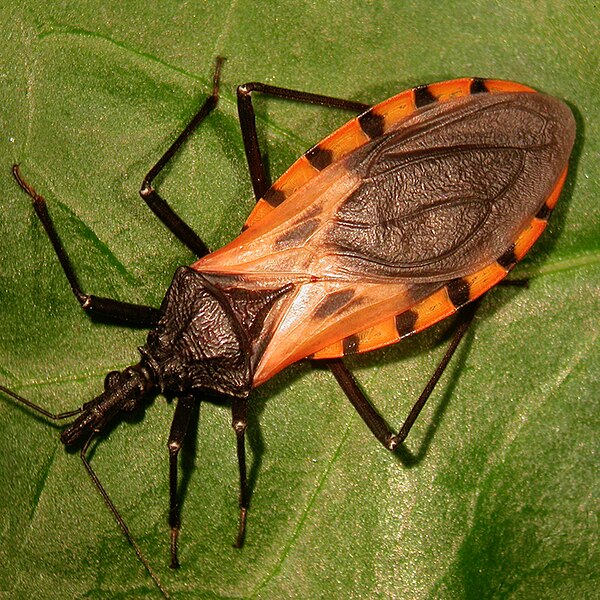
Emiliana Rodriguez, 42, discovered she had to live with Chagas, a “monster,” after relocating to Barcelona from Bolivia 27 years ago.
“Night is when the fear generally struck. I didn’t always sleep well,” she admitted. “I was worried that I wouldn’t wake up from my sleep.”
Rodriguez had specific tests when she was eight years old and expecting her first child, and the results indicated that she carried the Chagas gene. She recalled the passing of her buddy and remarked, “I was paralyzed with shock and remembered all those stories my relatives told me about people suddenly dying.” “I wondered, ‘What will happen to my baby?’”
Rodriguez was prescribed medicine, though, to prevent the parasite from vertically transmitting to her unborn child. After her daughter was born, she tested negative. Elvira Idalia Hernández Cuevas, 18, was unaware of the Mexican silent killer until her 18-year-old son was diagnosed with Chagas.
Idalia, an eighteen-year-old blood donor from her birthplace near Veracruz, Mexico, had a positive diagnosis for Chagas, a disease caused by triatomine bugs, often known as vampire or kissing bugs and bloodsucking parasites, when her sample was tested.
In an interview with the Guardian, Hernandez stated, “I started to research Chagas on the internet because I had never heard of it.” When I read that it was a silent murderer, I became really afraid. I had no idea where to go or what to do.
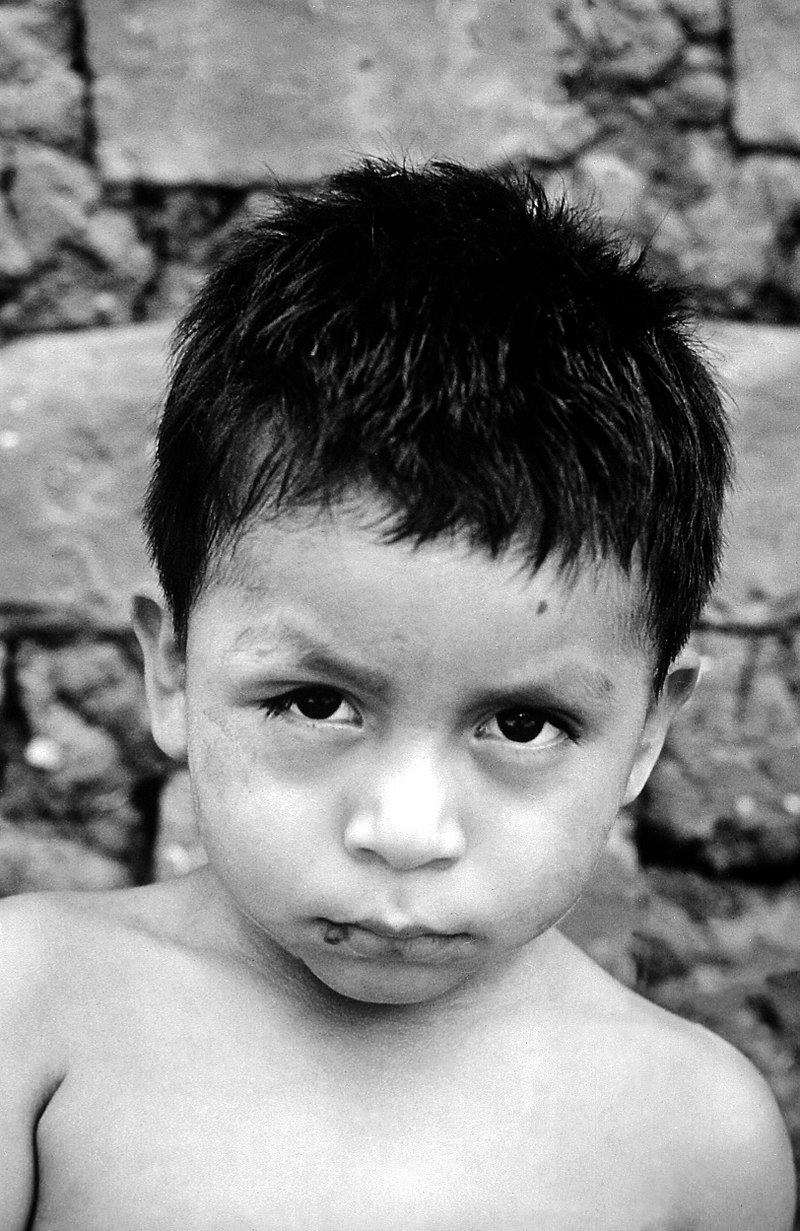
She is not alone in this; a lot of people are ignorant of the diseases that these unpleasant bugs can spread. The term Chagas originates from Carlos Ribeiro Justiniano Chagas, a Brazilian physician and researcher who made the discovery of the human case in 1909.
Over the past few decades, reports of the incidence of Chagas disease have been made in Europe, Japan, Australia, Latin America, and North America.
Kissing bugs are mostly found in rural or suburban low-income housing walls, where they are most active at night when humans are asleep. The insect bites an animal or person, then excretes on the skin of the victim. The victim may inadvertently scratch the area and sever the skin, or they may spread the excrement into their mouth or eyes. This is how the T. cruzi infection is disseminated.
The World Health Organization (WHO) estimates that between 6 and 7 million people worldwide—roughly 8 million people in Mexico, Central America, and South America—have Chagas disease; the majority of these individuals remain oblivious to their illness. These estimates are provided by the Centers for Disease Control and Prevention (CDC). The persistent infection might be fatal if untreated. According to the Guardian, Chagas disease kills over 12,000 people year, “more people in Latin America than any other parasite disease, including malaria.”
Despite the fact that these bugs have been found in the United States—nearly 300,000 people are infected—they are not thought to be endemic.
While some people never experience any symptoms, the CDC notes that 20 to 30 percent experience gastrointestinal or heart problems that can cause excruciating pain decades later.
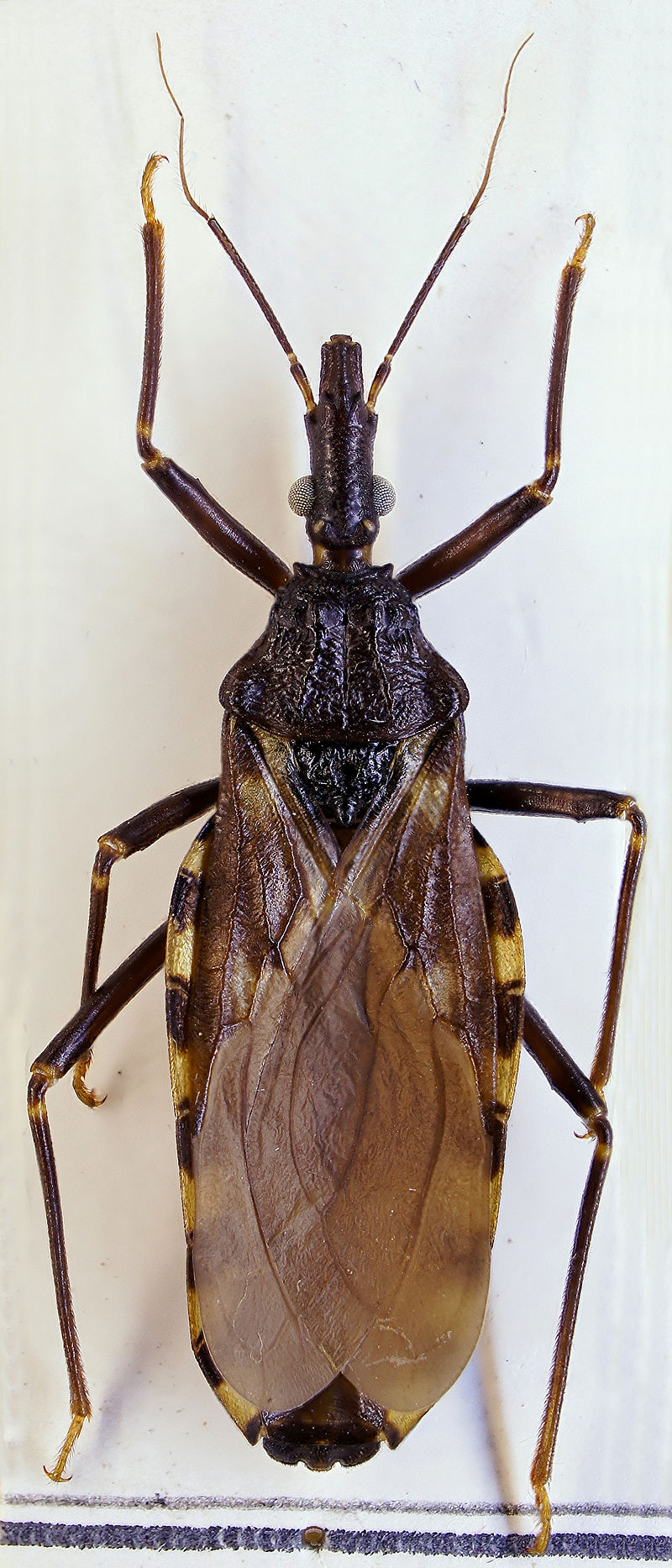
Furthermore, only 10% of cases are detected globally, which makes prevention and treatment exceedingly challenging.
Hernández and her daughter Idalia went to see a number of doctors in search of assistance, but all were also uninformed about Chagas disease and its management. “I was taken aback, terrified, and depressed because I believed my kid was going to pass away. Above all, Hernandez stated, “I was more anxious because I was unable to locate any trustworthy information.”
Idalia finally got the care she required after receiving assistance from a family member who was employed in the medical field.
“The Mexican government claims that the Chagas disease is under control and that not many people are affected, but that is untrue,” Hernández asserts. Medical practitioners misdiagnose Chagas disease for other heart conditions because they lack knowledge in this area. Most people are unaware that there is Chagas in Mexico.
The World Health Organization (WHO) has classified chagas as a neglected tropical disease, which means that the global health policy agenda does not include it.
Chagas is overlooked in part because, according to Colin Forsyth, a research manager at the Drugs for Neglected Diseases Initiative (DNDi), “it’s a silent disease that stays hidden for so long in your body… because of the asymptomatic nature of the initial part of the infection.”
Forsyth went on to say, “The people affected just don’t have the power to influence healthcare policy,” making reference to the impoverished communities. It’s kept hidden by a convergence of social and biological factors.
Chagas, however, is becoming more well recognized as it spreads to other continents and can also be transferred from mother to child during pregnancy or childbirth, as well as through organ and blood transfusions.

The main objective of the Chagas Hub, a UK-based facility founded by Professor David Moore, a doctor at the Hospital for Tropical Diseases in London, is to get “more people tested and treated, and to manage the risk of transmission, which in the UK is from mother to child,” according to Professor Moore.
Regarding the WHO’s 2030 aim for the eradication of the disease, Moore stated that progress toward it is “glacial” and added, “I can’t imagine that we’ll be remotely close by 2030.” That seems improbable.
Two medications that have been available for more than 50 years to treat chagas are benznidazole and nifurtimox, which according to Moore are “toxic, unpleasant, not particularly effective.”
Although the medications are effective in curing babies, there is no guarantee that they will prevent or halt the advancement of the condition in adults.
Regarding severe adverse effects, Rodriguez remembers getting dizziness and nausea as well as breaking out in hives. She completed her therapy, and she gets checked out annually.
Moore goes on to say that while creating stronger anti-Chaga drugs is crucial to stopping the disease’s spread, pharmaceutical companies are currently not financially motivated to do so.
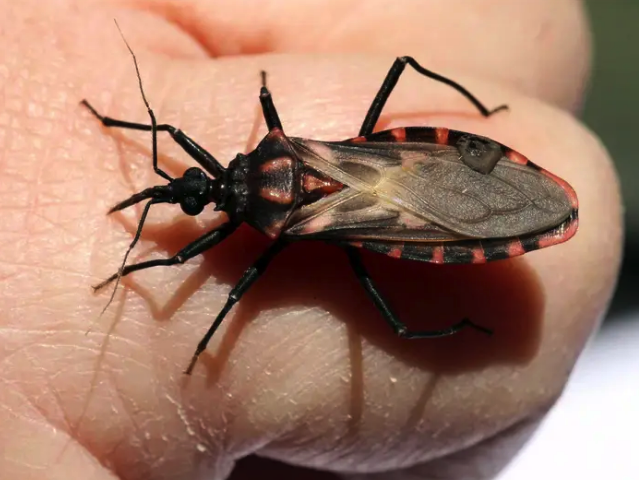
As president of the International Federation of Associations of People Affected by Chagas condition (FINDECHAGAS), Hernández is on a mission to raise awareness of the condition until there is a greater need on the market for innovative treatments.
In Spain, Rodriguez is battling the “monster” as part of a campaign to increase public awareness of Chagas disease being conducted by the Barcelona Institute for Global Health.
“I’m tired of hearing nothing at all,” Rodriguez declares. “I want Chagas to be discussed and made public. I’m in favor of testing and therapy for individuals.
They are being heard, too.
World Chagas Disease Day was instituted by the WHO on April 14, 1909, the day Carlos discovered the disease’s first human case.The WHO states that “a diversified set of 20 diseases and disease categories are set out to be prevented, controlled, eliminated, and eradicated through global targets for 2030 and milestones.” And among them is Chagas.
To prevent a possible infestation, the CDC suggests taking the following steps:
Close up any gaps and fissures around doors, windows, walls, and roofs.
Clear out the rock, wood, and brush piles close to your home.
Put screens on windows and doors, and fix any tears or holes in them.
Close up gaps and crevices that lead to the exterior, crawl areas beneath the home, and the attic.
Keep pets inside, especially during the evening.
Maintain the cleanliness of your home and any outdoor pet resting places, and check for bugs on a regular basis.
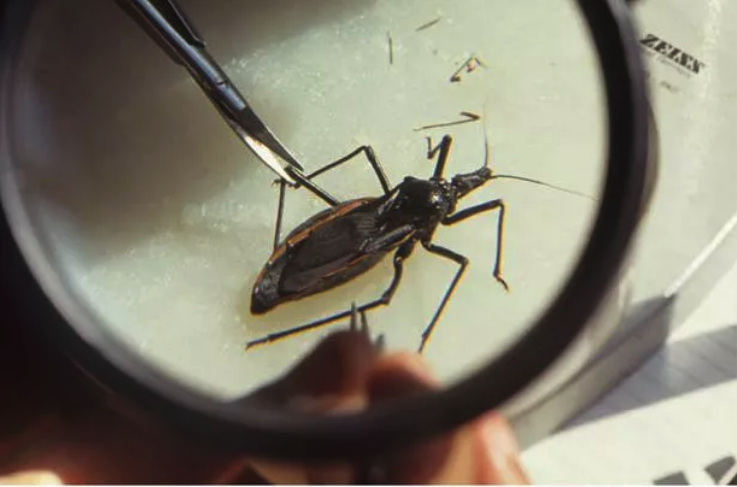
If you believe you have discovered a kissing insect, the CDC recommends avoiding crushing it. Alternatively, carefully put the bug in a jar, fill it with rubbing alcohol, and then freeze it. It is then recommended that you bring the bug’s container to an academic lab or your local health authority so that it can be identified.
Please tell this tale to help spread the word about an illness that goes unnoticed!



Leave a Reply